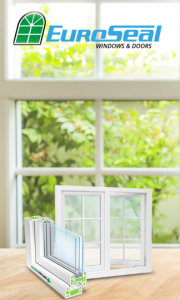CALL US: 416-650-5070
Menu
CALL US: 416-650-5070
CALL US: 416-650-5070
Your patio can be a relaxing zone in your home. It’s a usable exterior space and raises your home’s value. They can even be an energy-efficient solution for your home. These benefits, however, can be difficult to enjoy if your patio door is incorrectly adjusted or misaligned. It can lead to a few problems, like air leaks or costly damage to the door.
So that you don’t make mistakes when adjusting your patio door, we have compiled the key steps to follow in this article. We aim to dive into the common issues arising from misaligned patio doors, and how you can fix them.
Our intent is that when you get to the end, you will have no doubts about how to make the correct adjustments. Continue reading to find the essential information!

Adjusting a patio door all begins with understanding your patio door, of which there are many types. Sliding patio doors are just one example; French, and folding doors are also common types. Each has components that you will need to familiarize yourself with.
The key components of a patio door system you will need to know include the following:
What are the main causes of misalignment––how does it happen? We advise that there are a few factors that affect the alignment of your patio doors.
French doors are crafted from various materials, providing homeowners with various options to suit their preferences. Common choices include wood, which lends a warm and traditional feel, and metal, offering a more contemporary aesthetic. The divided glass panes contribute to the overall aesthetic and allow for customization, offering the option to choose between clear, frosted, or patterned glass.
One of the practical advantages of French doors is their wide opening range. When both doors are open, they allow easy movement of people and large items. This feature enhances ventilation and provides an unobstructed view of the outdoors.
Assessing the misalignment situation starts with looking for a few signs, including dragging and sticking issues when using the door. If a sliding door lacks a seamless, smooth motion when you try to open or close it, then this is a potential sign of misalignment.
Gaps between the track and panel or the frame and the jamb also indicate that components are displaced. As you look to identify specific areas of concern, such as the track, rollers or hinges, you can narrow down the potential causes. It is ideal to look at each component in isolation. This can determine which part is causing the misalignment.
A few tools and materials are needed for patio door adjustment. So first, gather the following tools and materials:
Additional materials are also important, such as:
With the tools and materials gathered from a hardware store, you can complete our steps below in this full adjustment guide.
To fix sliding doors, adjusting the track alignment is a key step. Remove the plastic plugs that may hide the adjustment screws. Make adjustments to the rollers by turning the adjustment screws clockwise to raise them. You will find that anticlockwise motions will lower them. Complete this adjustment process on each side and adjust the sliding doors so they align with the track.
Your next step involves lubricating the rollers and hinges with silicone lubricants, which are an ideal alternative to oil-based options for reducing clogging. Using silicone spray, you can apply the solution to the rollers for sliding patio doors or to hinges for French doors.
Then, reposition the rollers into the rails of the sliding patio door or reattach the hinges, but ensure you wipe away excess lubricant beforehand.
You can then proceed with aligning and adjusting the frame. Tweak the vertical alignment at the top and bottom of the door. Then, make adjustments to the hinges with a screwdriver.
Start by loosening the screws slightly. Adjust the height and place the door in its original position. Retighten the screws once more. You can then open and close the door to test whether the frames are well-aligned.
Checking and adjusting the locking mechanism is vital for security and a functional sliding door. Begin by opening the door and locating the latch assembly. You should then start turning the adjustment screw on the lock face clockwise using a small screwdriver. This will make the latch hook longer.
As you make the adjustments, test whether the door will close. If it doesn’t function, reduce the length of the latch by turning the adjustment screw counterclockwise, and retest the door until it operates correctly.
The following maintenance tips for longevity can ensure your patio doors have a favourable lifespan. Check out our top pointers.
Completing regular cleaning and lubrication helps toward the longevity of patio doors. Use a brush with stiff bristles to clean the tracks of sliding patio doors and apply lubricant sprays to accurately distribute the silicone-based solution.
Carrying out seasonal inspections and adjustments by checking the patio doors and hardware aids in keeping them in a functional condition. Open and close the doors and periodically review the locks and hinges. Take a close look at the tracks and check for debris build up, and check for weather-related damage to your patio doors.
Knowing when to seek professional help, such as with extensive damage and safety issues, is ideal for preventing serious patio door malfunctions. If you see that the door no longer locks properly or that the track is bent, calling in a professional is best.
Adjusting a patio door is ideal for security and comfort inside your home, and regular maintenance and adjustments can help. The steps in our guide will contribute to the extended longevity and optimal performance of your doors.
If in doubt, seeking professional help to adjust your patio door can be ideal. You can count on Euroseal Windows in situations when your adjustments have been unsuccessful. Contact Euroseal Windows for patio door adjustment services to enhance the longevity of your doors.

Read more